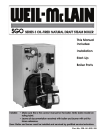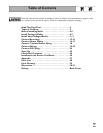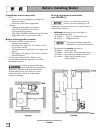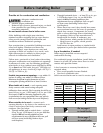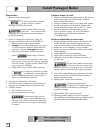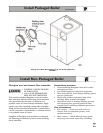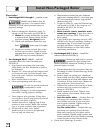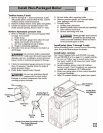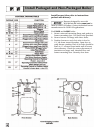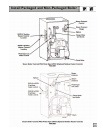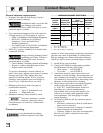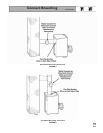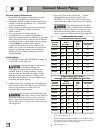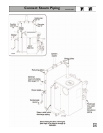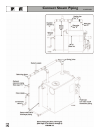
Recommended Service Clearances
FIGURE 1
Installations must comply with:
• U.S.
— State and local plumbing, heating and
electrical codes.
— National codes where applicable.
• Canada
— Canadian Standards Association,
CSA B139, Installation Code for
Oil-Burning Equipment.
— CSA C22.1 Canadian Electrical Code Part One.
— Applicable local or provincial codes.
Before selecting boiler location:
• Check for nearby connections to:
— System water piping.
— Chimney. See pages 12-13. Boiler can be
top or back vented.
— Combustion and ventilation air supply. See
page 5.
— Oil supply. See page 24 for oil line routing.
— Electrical power.
• Check area around boiler. Remove any
combustible materials, gasoline and other
flammable liquids.
Failure to keep boiler area
clear and free of combustible
materials, gasoline and other flammable
liquids and vapors can result in severe
personal injury, death or substantial
property damage.
Provide clearances around boiler
(see FIGURE 1):
Jacket cap must be in place on
boiler to avoid requiring an 18"
minimum clearance from back or top of boiler to
combustible material.
• Minimum clearances from vent pipe to
combustible material:
6 inches — Type “L” doublewall vent*
18 inches — Singlewall vent*
Flue pipe clearances must take
precedence over jacket clearances.
• Recommended service clearances:
24 inches — Front and top
6 inches — Left side**, back and right side Δ
15 inches — Left side with tankless heater**
12 inches — Right side for burner door
swing radius Δ
4
Before Installing Boiler



